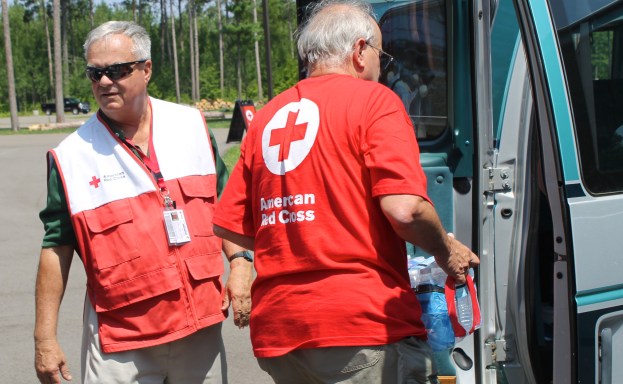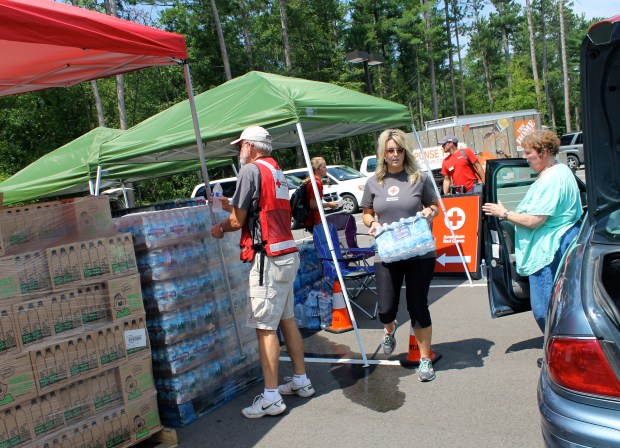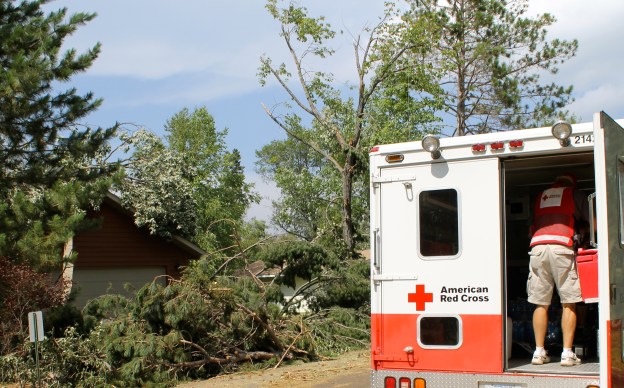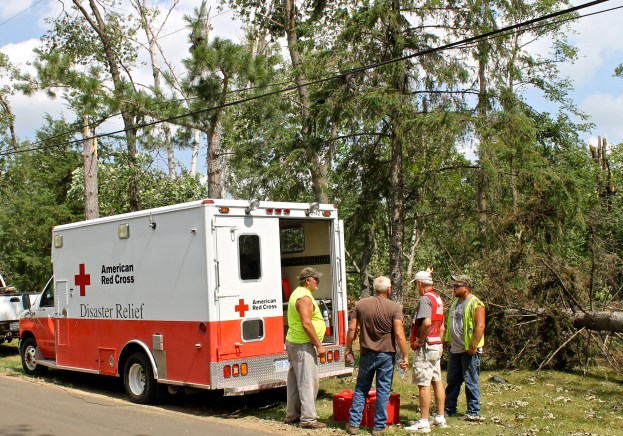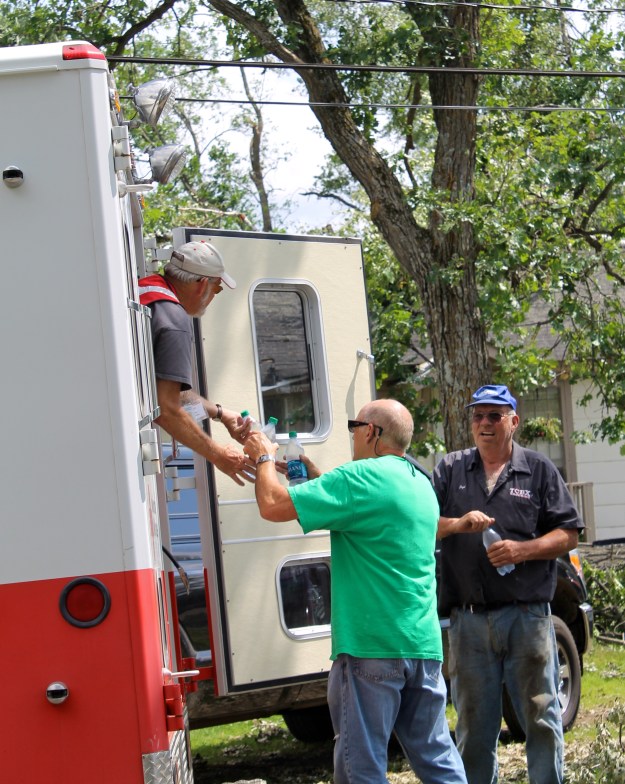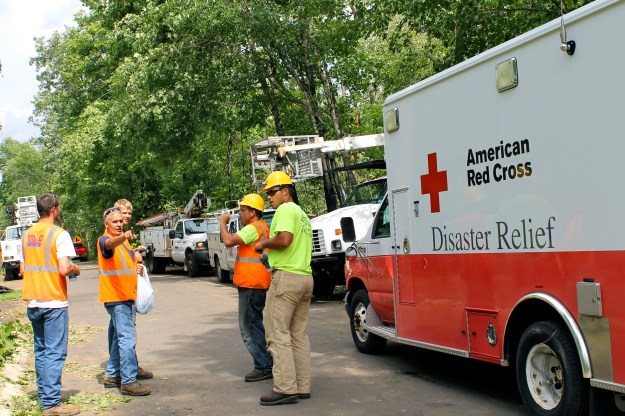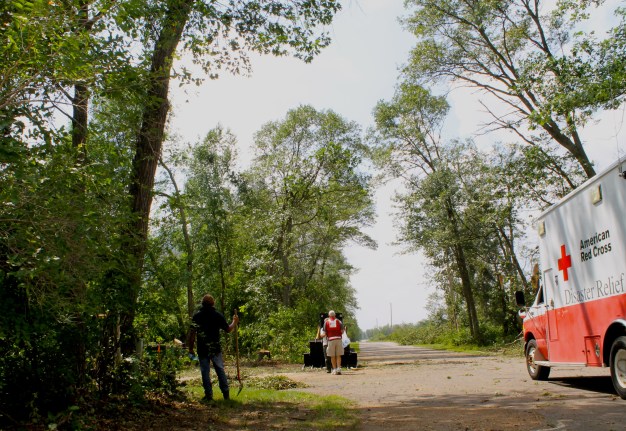By Kaylee Beevers, American Red Cross intern
Across the United States, the American Red Cross has people who volunteer their time as dispatchers during Red Cross disaster responses. These volunteers help fulfill the Red Cross mission to reduce human suffering during emergencies. Red Cross dispatchers coordinate response teams that provide basic comfort and care to families after home fires and other disasters. These dispatchers serve their communities with care. This volunteer role is one of the most worthwhile ways to get active in the Red Cross. Below are brief portraits of five volunteers who serve as disaster response dispatchers for the Minnesota Red Cross region.

Mike and Deb Hofmann, St. Cloud
Based in central Minnesota, Mike and Deb Hofmann proudly serve together as Red Cross volunteer dispatchers. The couple met in high school and they currently living in Cold Spring. Mike has served the American Red Cross for 40 years through multiple volunteer positions and Deb has been with the organization as a dispatcher for 10 months. Some of the most rewarding parts of the job for the couple is knowing you can help people during their time of need and offer services. Deb says, “When they’re looking for a way to go, we give them a direction.” Their advice? If you want to get involved, connect with your local Red Cross chapter.
 Diane Dunder, Duluth
Diane Dunder, Duluth
After retiring as a health and physical education teacher, Diane Dunder decided to take on the volunteer role as a Red Cross disaster relief dispatcher. Dunder says she was graced with “the best instructors who knew what they were doing and were very well informed about the job.” Some of the role’s challenges in her area, she says, are not having enough field responders as well as other dispatchers. “We all have other things going on in our lives and yet more help would be appreciated.” One of Dunder’s greatest rewards while serving as a dispatcher was helping an elderly woman after a house fire. The victim had health issues and Dunder spent several days following up and working with healthcare and mental healthcare professionals to make sure that the woman was safe. “Being a dispatcher is a great way to volunteer and keeps you educated,” says Dunder.
 Joe Reinemann, Mankato
Joe Reinemann, Mankato
Stationed in the southwest Red Cross chapter in Mankato, Joe Reinemann has been a volunteering dispatcher for more than a year. Reinemann usually works as a dispatcher during night shifts that start from 4:30 to midnight or from midnight to 8 am. Reinemann, who helped create the most recent dispatcher training materials, says “we’re upgrading our dispatcher manual. It’s extremely hands-on. It’s also one-on-one.” Reinemann felt nervous when he received his first dispatch call for Red Cross disaster response. He wanted to make sure that everything went well, but he says “the help and training are so great that sometimes you don’t even need any assistance from other dispatchers.” Reinemann’s advice to future volunteers is to “DO IT! It may be imitating to sign up, but it’s not complicated at all.”
Jan Reyers, Mpls-St.Paul Metro
Jan Reyers has served as a volunteer with the Red Cross for more than 35 years. Most currently, he’s disaster response dispatcher based in the Minneapolis-St. Paul metro area. Originally from White Bear Lake, Jan is proud to serve with the Red Cross alongside his wife Bonnie, who is also a dispatcher. “It’s always nice to have your wife as a dispatcher to help coach you along.” Being a dispatcher has taught Jan how to prioritize what he’s doing and to get it done correctly. Jan says the skills you need in order to become a dispatcher are communication, organization of information and people, and demonstration of empathy. Having served as a disaster responder in the field helps. “Get involved, sign up and be available to serve,” is Reyers’ advice to all anyone who wants to participate with Red Cross disaster relief teams.
Learn more
The need for Red Cross volunteer dispatchers is great. Last year the Red Cross supported more than 2,500 people affected by local disasters, which were mostly home fires. It’s a great way to serve and to meet new people. The current Red Cross dispatchers need to you step up and to get involved! More importantly, your neighbors, friends, family and thousands of others across this region need you. You never know when hard times will strike and you could lend a hand to someone who needs it the most. You could be the person who gives someone hope during a time of despair and a way to look toward a brighter tomorrow. To learn more, click here.















